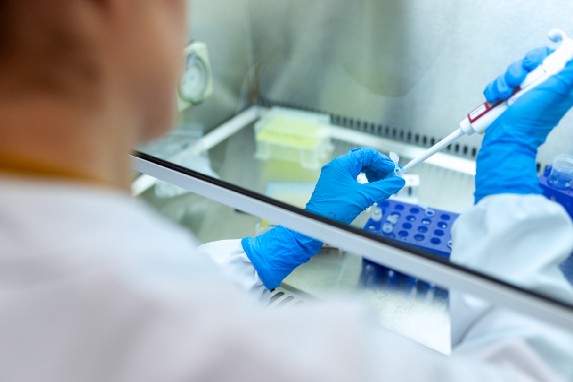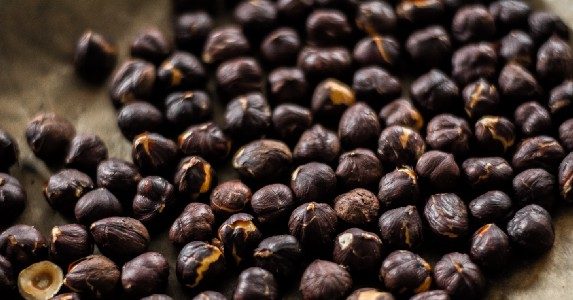Surge in confectionery demand in COVID-19 lockdown
The chocolate industry is one of the top performing sectors of the confectionery industries. Cocoa and chocolate products rely on high-quality ingredients and raw materials, strict supplier partnership schemes and conformity to clearly defined quality and safety standards.
There’s no doubt that chocolate consumption during COVID-19 lockdown has been on the rise putting strain on the chocolate supply chain. According to a UK convenience retail market report there was an 8% growth in 2020, with the proportion of shoppers impulse purchasing confectionery increasing by 23% during lockdown.
Food incident risks in the chocolate supply chain
Over the course of the past 10 years there have been a significant number of food safety incidents associated with chocolate products. The presence of Salmonella enterica, Listeria monocytogenes, allergens and foreign materials in cocoa and chocolate products have been reported on a global scale.
These risks intensify as there is more demand for chocolate products with producers and manufacturers struggle to keep up with expectations both during and post-lockdown.
Now, we have previously commented on what the future has in store for the chocolate industry and identified food safety data insights around the main hazards, and how to deal with them. We won’t go into further detail here about chocolate products in the global supply chain as we have covered this already in ‘What does the future hold for chocolate?’
However, what we will explore in further depth are the hidden risks of raw materials associated with chocolate. Often an area that is overlooked by businesses that work within the global chocolate supply chain.

The hidden risks of hazelnuts
Hazelnuts, for example, are one of the most used ingredients in chocolate and cocoa products, and Turkey is its global producer. According to our data, more than 8 in 10 (88.88%) of the hazards with hazelnuts were due to chemical contamination, with 1 in 10 (11.68%) hazards relating to fraud, biological, allergens, foreign bodies, or organoleptic aspects. An analysis of the data of 50 national and international authorities, shows that the amount of hazelnut recalls due to aflatoxins skyrocketed from 2006 to 2008; a family of toxins produced by certain fungi that are found on agricultural crops
Mining data from the country of origin
By honing in on the hazelnut producing markets we can discover additional insights. Data from Turkey shows that the Black Sea region of Turkey — one of the top producing provinces — accounts for the largest proportion of food safety-related incidents associated with aflatoxin. In fact, from 2016 to 2018 the number of food safety insights almost tripled due to this hazard in Turkey.
According to recent studies, a high percentage of relative humidity (RH) increases the risk of aflatoxins contamination during the harvest and the drying processes of hazelnuts.
This correlates with the Black Sea region as the Turkish State Meteorological Service shows that the weather in this region is particularly humid increasing the risk of aflatoxin.
In addition, improper handling and storage conditions after hazelnut dehulling, increase the risk of Aflatoxin contamination.

How to navigate the risks of Aflatoxins
So, how do we ensure a safe chocolate supply chain in relation to mitigating the risks of Aflatoxins?
Monitoring Aflatoxin levels is critical during the suppliers’ assessment processes in the chocolate industry. The accurate assessment of aflatoxins risk is essential to minimizing food safety concerns and reducing economic losses. Starting from the farm, the utilization of smart sensors enables monitoring of critical parameters that are key to aflatoxin contamination. Especially during harvest, temperature and relative humidity play an important role in increasing the risk of aflatoxin contamination.
Continuous monitoring of the critical risk parameters for aflatoxin contamination, allows for instant data collection from the different production and supply chain stages.
Additionally, by applying smart sensors during the processing stage, quality analysts can collect valuable data on correlating critical control indications (e.g. processing) with the quality and safety of the end product.
Beware of food fraud
In addition, manufacturers need to keep themselves up to date on food fraud. There have been many fraud incidents related to health certificate issues and improper analytical reports.
In Germany, Interpol’s Operation Opson VI between December 2016 and March 2017 found adulterated hazelnut paste and roasted chopped hazelnuts by up to 45% with peanuts, cashews and almonds.

Establishing a robust Supplier Verification Process
The key to managing food safety risks in the chocolate supply chain are to develop and implement a robust Supplier Verification Process. Generic risk assessments for suppliers are no longer sufficient. Based on the continuous analysis of data on food recalls and rejections, from key national and international food authorities, a FS/QA Manager must set up an adaptive Supplier Verification Process by extracting intelligent insights from such data.
Quality Assurance, Procurement, Food Safety, Regulatory and Quality departments must have access to critical supplier data that will inform the internal procedures for incoming materials and ingredients, e.g. raw materials, packaging materials, to enable adaptive laboratory testing routines and compliance protocols.
Moreover, quality assurance and safety professionals can quickly update points of critical control when needed and intervene in important stages of the chocolate manufacturing process.
During the verification process questions there are a number of questions that should be asked to suppliers. These include Geopolitical Considerations — is the region that has frequent food recalls of this type of raw material? — Supply Chain Due Diligence — does the supplier provide verified information on raw material transparency, traceability and certification compliance? — Certification Status, History of Food Recalls, Food Incidents and Fraud Incidents, and History of Border Rejections, History of Import Detentions, and History of Complaints or Warning Letters.
For a comprehensive list of supplier questions, Agroknow has developed its very own Suppliers’ Risk Assessment Guidelines. You can download your copy here and this will provide you with peace of mind across your chocolate supply chain.

Ongoing monitoring and risk management
Once you’ve chosen a supplier, it’s important to continually manage the ongoing and evolving risks within the chocolate supply chain. The COVID-19 pandemic has boosted the discussions around remote risk assessment using digital tools. One of the most important tools to assess risk — onsite audits — is not currently fully available to food safety and quality assurance experts, creating the need to assess the risk remotely.
It is essential that the food industry uses remote risk assessment, by harnessing information and communication technologies which play a pivotal role. It has now becoming a necessity to carry out checks remotely due to health concerns, and we will see this continue following the lifting of global lockdown restrictions.
For a full list of digital tools, we’d encourage you to read our article on ‘A review of systems and tools for remote food safety risk assessment.’

